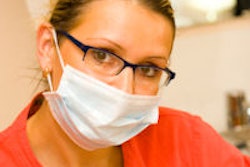The New York State Dental Association (NYSDA) is applauding the passage of a new law that allows dental hygienists working in certain facilities to work under collaborative agreements with dentists who have a formal relationship with the same facility.
The legislation -- A.7866, sponsored by Assemblywoman Deborah Glick, and S.5757, sponsored by Sen. Kemp Hannon -- passed overwhelmingly in both the New York State Assembly (138-2) and the Senate (60-3) and has now been signed by Gov. Andrew Cuomo. It allows dental hygienists working in facilities licensed under Article 28 of the New York State Public Health Law to work under collaborative agreements with dentists having a formal relationship with the same Article 28 facility.
With the passage of the law, NYSDA has answered the call for improving access to dental care while maintaining important patient safety concerns, the association noted in a press release.
Article 28 facilities are primarily hospitals but also include nursing homes and school-based health clinics. What the collaborative agreement system will do in these Article 28 facilities is free the dentist from the current requirement that they must be readily physically available to the location to be considered as providing proper general supervision for dental hygienists, according to the NYSDA. It substitutes a collaborative practice agreement arrangement that will allow the dentist and the dental hygienist to work out the supervision protocol most effective for the particular Article 28 setting.
Only a dentist who already has a formal relationship, such as hospital privileges, will be allowed to enter into a collaborative practice agreement with a dental hygienist at the same hospital.
Since 2008, NYSDA has been introducing legislation for collaborative practice arrangements with dental hygienists, but issues concerning scope of practice kept the bill from advancing through the Legislature, the association noted. The NYSDA has also worked to fashion some type of acceptable collaborative practice arrangement that would be targeted to areas that made the most sense and would help improve access to dental care for underserved populations in the state.
The state Dental Hygienists' Association (DHASNY) responded with this statement to DrBicuspid.com:
"This new law is an important step forward in increasing access to preventive and therapeutic dental hygiene services for New Yorkers. The Dental Hygienists' Association of the State of New York (DHASNY) has been actively working for collaborative practice and related initiatives since 2006, including strong support for the collaborative practice proposal of the Medicaid Redesign Team this year.
DHASNY had concern with the particular language of this new law with respect to the practical use of the provisions. For example, tying the options for securing a collaborating dentist to the employee/contract dentists on staff of the proposed practice site limits the capabilities of an RDH-CP (Registered Dental Hygienist-Collaborative Practice) to practice in areas of real need. Many non-profit organizations, including FQHC's are without a dentist due to the shortage of practitioners willing to practice in a high need area. The national movement to expand RDHs to sites without dentists is a huge part of the puzzle to halt dental disease through preventive measures, the very foundation of dental hygiene practice.
DHASNY will be working for positive implementation and use of this new law and will continue its efforts to advance access to oral health services for all New Yorkers."



















